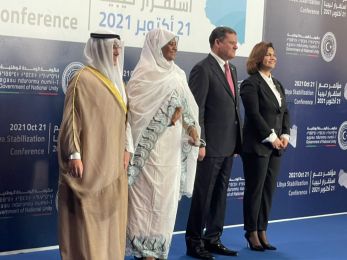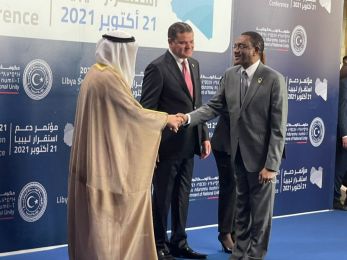Zimbabwe in hyperinflation for first time since 2008
Harare, Zimbabwe (PANA) - Zimbabwe is officially in hyperinflation as the annual inflation rate reached 166,15% at the end of March, based on the old calculation that the national statistics body used, due to price increases of basic commodities.
This is a significant increase of nearly 180 percentage points from an annual inflation rate of 59.4% recorded at the end of February.
Zimbabwe was last in hyperinflation in 2008 when the country had an annual inflation rate of 79.6 billion percent. However, using the new calculation to find the annual inflation rate, implemented as of last month, the Zimbabwe National Statistics Agency (Zimstat) reported that the annual inflation rate stood at 66.8%.
“The year-on-year inflation rate (annual percentage change) for the month of March 2019 as measured by the all items Consumer Price Index (CPI) stood at 66.80 percent, while that of February 2019 rate was 59.39 percent. This means that prices as measured by the all items CPI increased by an average of 66.80 percent between March 2018 and March 2019,” Zimstat said in its inflation report on Monday.
“The year-on-year inflation rate is given by the percentage change in the index of the relevant month of the current year compared with the index of the same month in the previous year. The year-on-year food and non-alcoholic beverages inflation prone to transitory shocks stood at 78.55 percent while the non-food inflation rate was 61.19 percent.”
Zimstat said that it was important to note that data on prices was collected during the period from March 13 to 19. Concerning the new calculation to ascertain the annual inflation rate which went into effect as of March 1, 2019, Zimstat said that they were now using new weights and a classification in accordance with international guidelines.
The use of a Classification of Individual Consumption by Purpose (COICOP) resulted in the creation of a new classification leading to 83 classes, 41 groups and 12 divisions.
“The number of items in the CPI basket is 495. The implementation of the COICOP classification is also part of the harmonisation project of Consumer Price Indices in different regions like the SADC region,” Zimstat said.
“All member states are supposed to adopt the new procedure to enable inter country comparisons of the CPI and the rate of inflation.
Inflation usually reflects money supply growth in the economy and one would be tempted to look at the current expenditure patterns where government has spent more than it's budget targets over the last two months.
“The outlook remains depressed in light of the current wheat and maize prices announced recently with millers and bakers following the general industry trends by factoring in input costs movements.”
The report of annual inflation comes after renowned American economist Steve Hanke said: “As I predicted, #Zimbabwe's RTGS$ has sunk like a stone. Zim's inflation rate reflects just that. Accurately measured for 4/13/19, Zim's annual inflation rate is 207%/yr, the second highest in the world.”
Last week, Zimbabwe’s Parliament Public Accounts Committee chairperson Tendai Biti warned of hyperinflation.
Since September 2018, the prices of basic goods began to rise on the back of shortages in foreign currency for companies to import critical raw materials to produce the commodities.
With failure to source foreign currency from the official forex market or interbank platform, created in February along with a local currency, most producers have turned to the parallel forex market to source foreign currency but at a premium of times six.
As such, retailers and business owners have been charging their prices according to parallel market premiums that continue to rise on a daily basis to purchase foreign currency on the black market.
Under the effects of hyperinflation, American financial literacy website, Investopedia says “people will tend to hoard goods — including perishables like food — because of rising prices, which in turn, can create shortages in stockpiles. Savings become worthless, affecting consumers' bottom lines”.
“And because people aren't depositing their money, financial institutions and lenders may go out of business,” the website continued.
All these scenarios are currently playing out in Zimbabwe. Increasing or printing more money than what can back it in an economy can also cause hyperinflation as ‘bad money will chase away good’.
The money supply before the reintroduction of a local currency in late February stood at about US$11 billion in electronic money, yet, actual money in the coffers was less than US$2.5 billion.
-0- PANA TZ/AR 16Apr2019






